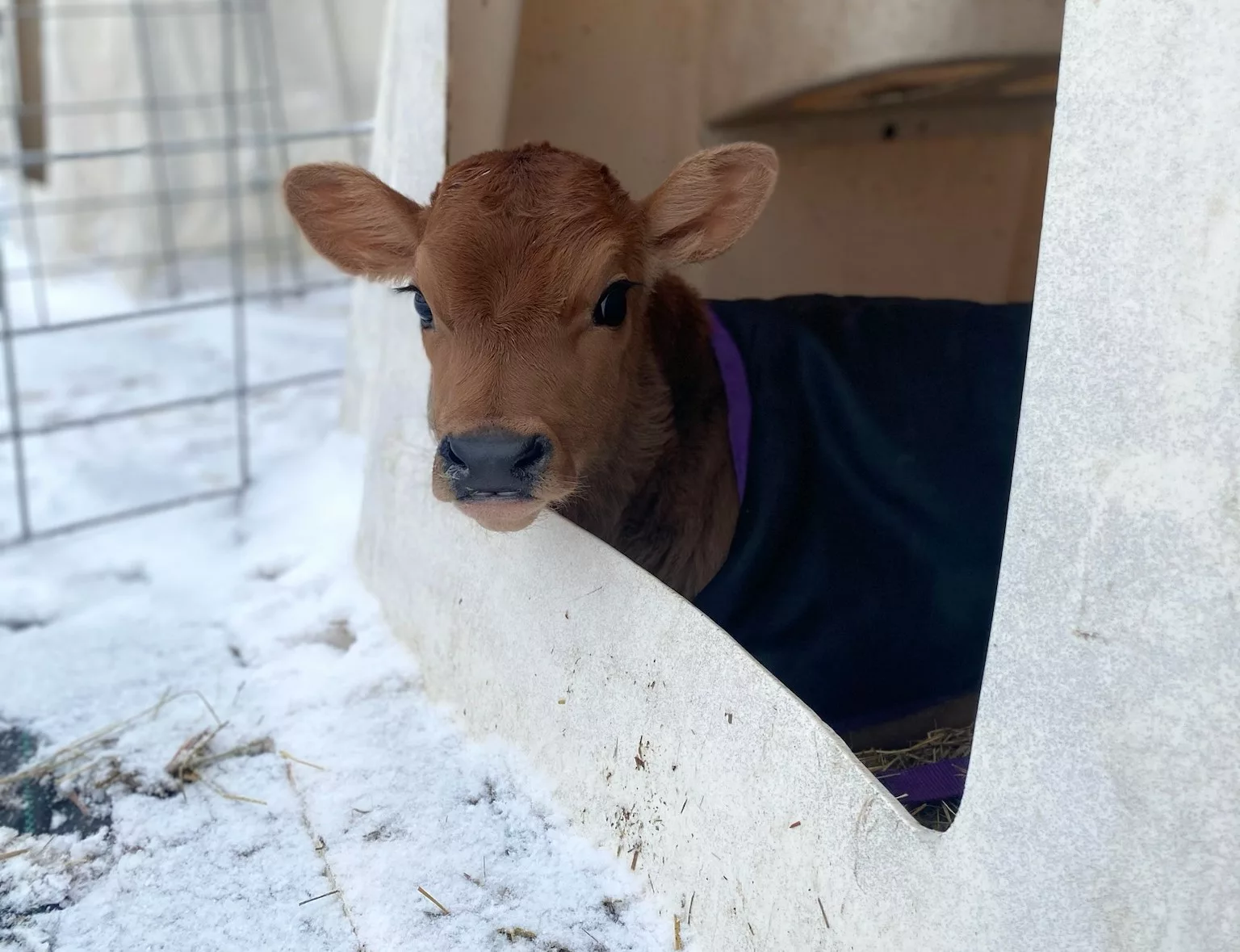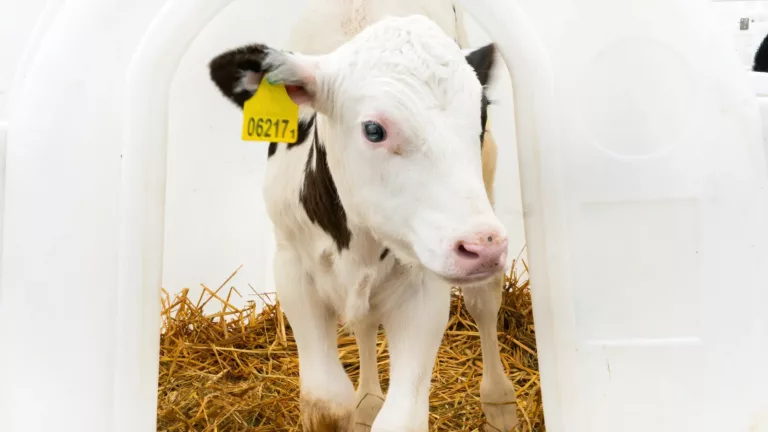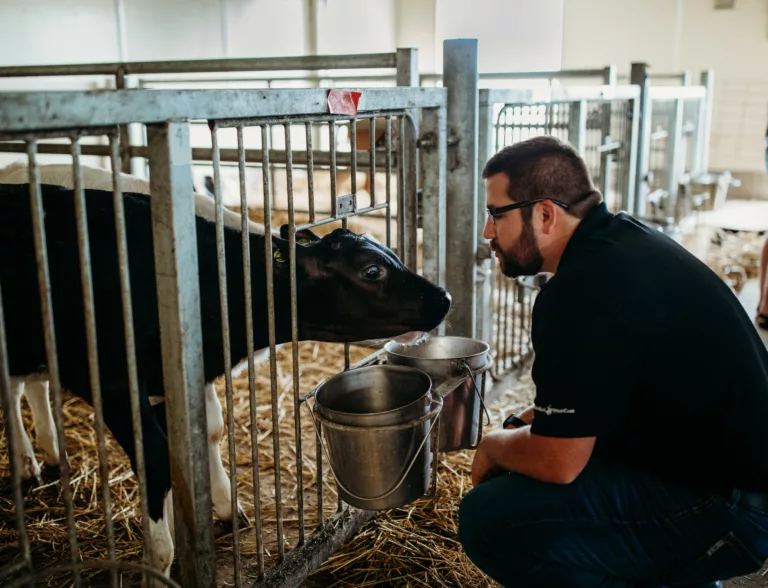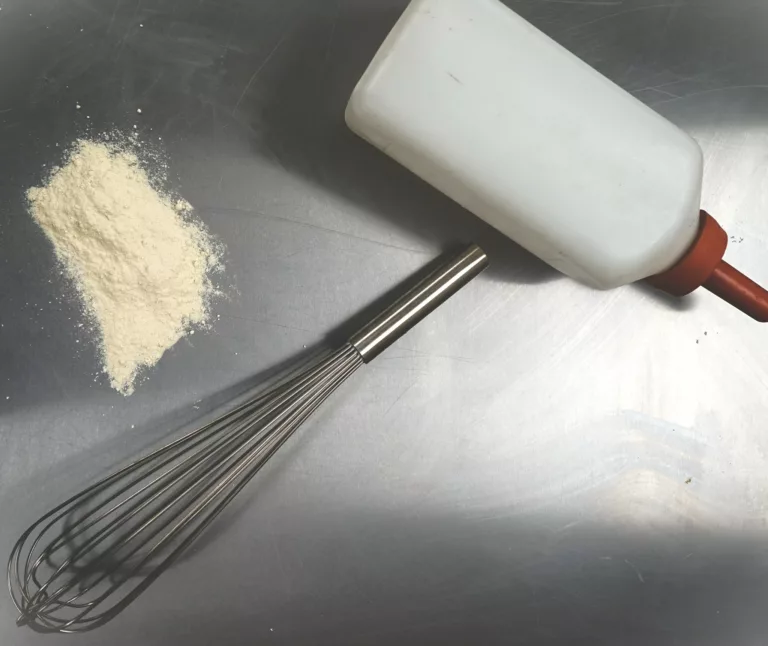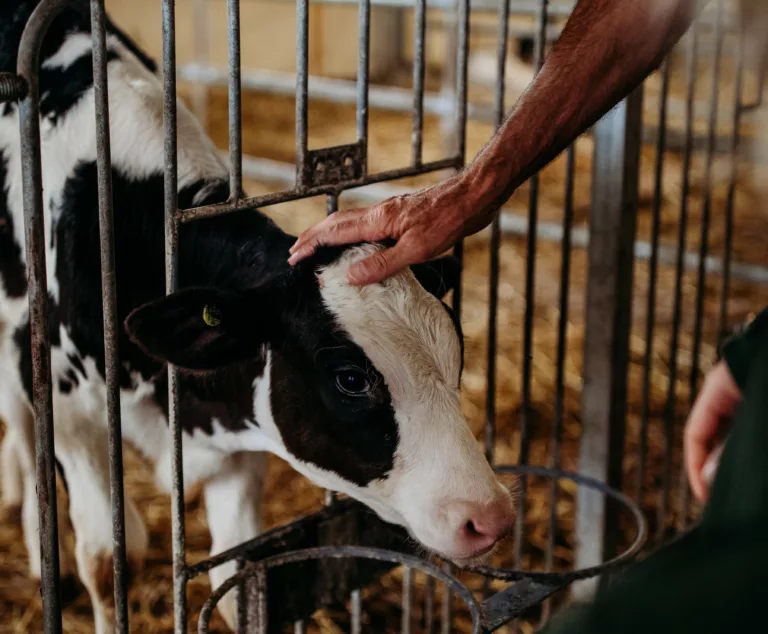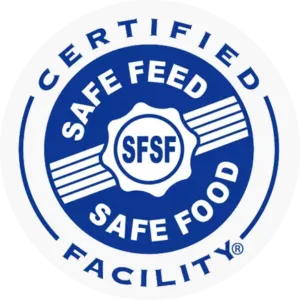During the first few months of life, calves and other youngstock experience consistent stress due to the ongoing physiological changes in their bodies. This stress can be further intensified by external factors such as weather. With winter approaching, it’s essential to be mindful of the challenges that youngstock face during the colder months.
What is Cold Stress?
Like any other warm-blooded mammal, calves strive to maintain a consistent body temperature, which is easier when they are within their thermal neutral zone (TNZ). The TNZ is the temperature range where calves do not need to expend additional energy to cool or heat their bodies. For calves under one month of age, the TNZ is between 50°F and 77°F. When temperatures drop below 50°F, calves must expend extra energy to maintain their body temperature. That extra energy needs to come from somewhere. Here are some suggestions on how to manage cold stress in your young animals to keep them healthy and growing during the colder months.
Nutrition:
1. Feeding Temperature:
Ideally, milk should be fed to calves just above their body temperature, at 103-105°F. However, even in well-organized operations, if cooler ambient temperatures are not accounted for, the milk can be delivered below the calf’s body temperature. If a calf consumes cool milk, it must expend energy to warm it up to body temperature. Moreover, colder milk may not stimulate the esophageal groove to close entirely, allowing milk to enter the immature rumen. With the rumen not fully functioning, milk can become rancid and cause digestive upset.
2. Fat Level:
Another method to manage cold stress is to increase the fat concentration of your milk replacer during the winter months. Raising the fat level increases the caloric load of the milk replacer. Keep in mind that it is possible to increase the fat content too much. The protein and fat should be maintained at a 1:1 ratio at a minimum, with the protein ideally being greater than the fat. Excessive fat can lead to digestive upset, causing calves to go off feed, which is far from ideal during the winter months.
3. Volume:
You can battle cold stress by feeding calves more. Feeding them increased milk volumes provides more nutrients to the calf. This can be accomplished by increasing the volume per feeding (e.g., 3 quarts instead of 2 quarts) or by adding an extra feeding to the schedule (3 feedings instead of 2). However, this method may be impractical, as most operations are locked into a specific bottle size, and labor restrictions make adding an extra feeding difficult.
4. Percent Solids:
Similar to increasing volume, increasing the percent solids provides more calories and nutrients to the calf, helping them meet their elevated maintenance requirements. This is a more desirable method than increasing the volume because you can maintain your typical feeding schedule.
Management:
1. Newborn Calves:
Most dairy operations have calves being born year-round. During the colder months, newly born calves are often covered in amniotic fluid. Wiping newborns down with a clean towel helps to dry off their coat, making it easier for them to retain heat. In addition, wiping down the calf mimics the dam licking her calf, which stimulates blood flow to the extremities.
2. Bedding:
Ensuring that calves have clean, dry bedding helps insulate them against the cold. Straw is considered one of the best bedding choices for keeping calves warm. It’s important to have enough bedding to maximize insulation. Ideally, calves should be able to nestle deeply into their bedding to the point where their legs are not visible when lying down.
3. Blankets:
Calf blankets provide an extra layer of warmth for the calf. Although they involve an added expense, they offer protection from wind and cold air. If you use blankets, be sure to adjust the straps regularly to accommodate your growing calf.
4. Fresh Air:
While it’s natural to be concerned about cold drafts during winter, having proper ventilation is essential. Calf pens or hutches without adequate ventilation can become a breeding ground for pathogens, potentially leading to the illnesses you were trying to avoid.
Winter can be a challenging time for young calves. Without proper care, you risk compromising the growth and health of your young animals. Reach out to your Esmilco team, and let us work with you to ensure your animals are well-prepared for the winter months ahead.

